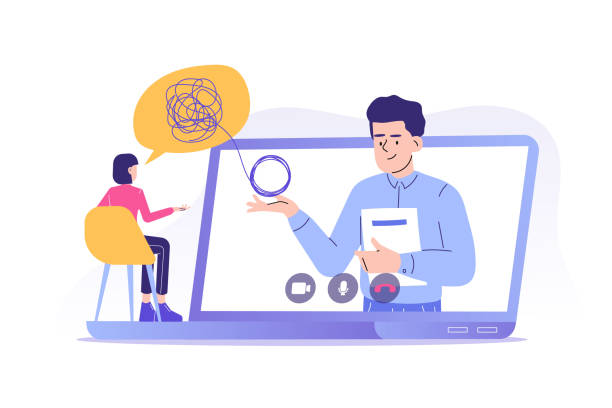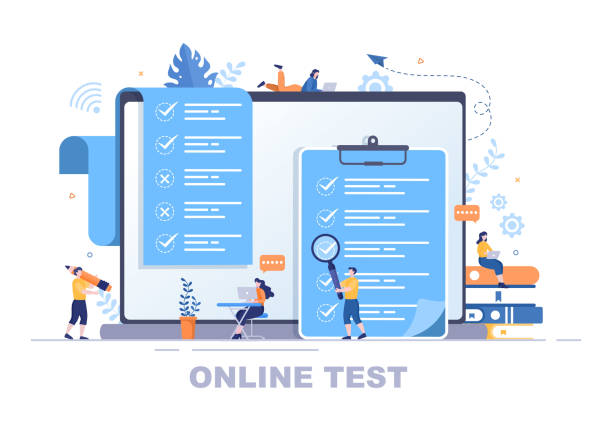Why Does Every Individual Need a Personal Website Design?

In the current digital age, having a personal website is no longer a luxury choice, but a necessity.
This digital platform allows you to shape your online identity, showcase your skills, and connect with the world.
From students and artists to entrepreneurs and professionals, everyone can benefit from its countless advantages.
Have you ever thought about how you can elevate your resume beyond a PDF file or share your personal stories and ideas with a wider audience? The answer lies in personal website design.
This website is not only a showcase for your work but also a space for #personal branding, #portfolio display, #knowledge sharing, and even #income generation.
Having complete control over the content you publish, compared to social networks that have their own rules and algorithms, is a significant advantage.
A personal website allows you to have a powerful online presence that is entirely under your control and aligned with your goals.
This is not only a professional tool but also a creative space for self-expression.
Many new job opportunities and collaborations begin through online searches, and a personal website can set you apart in this competition.
This is a long-term investment in your professional and personal future.
Are you bothered by losing customers who visited your site to buy?
Rasavab, your specialized solution for a successful online store.
✅ Significant increase in your online sales
✅ Building trust and professional branding with customers⚡ Get free consultation from Rasavab experts!
Initial Planning Steps for Your Personal Website
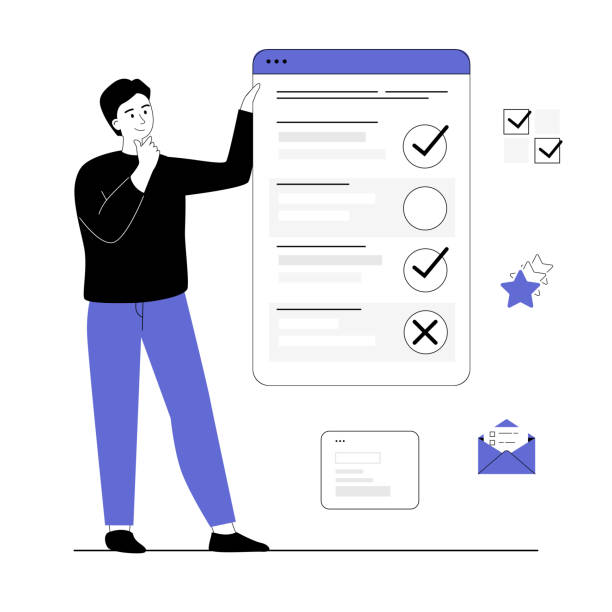
Before starting personal website design, precise and purposeful planning is essential.
The first step is to define the main goal of your website.
Do you intend it to be an online resume, a portfolio to showcase artworks, a blog to share thoughts, or a combination of these? Understanding the target audience is also of high importance.
For whom is your website designed? Knowing this will help you choose appropriate content, design, and tone.
After defining goals and audiences, it’s time to plan for content.
What kind of content do you want to publish? Do you need an image gallery, a blog section, a contact page, or a registration form? Creating an initial sitemap or wireframe can help you visualize the website structure and prevent confusion in later stages.
This educational and guiding phase helps you have an overall vision of what you want to build.
Choosing a suitable name for the website is also part of these initial steps; it should be memorable, relevant, and available.
Remember that this stage forms the foundation of your website’s success, and the more precise the planning, the better the final result.
These seemingly simple initial steps will significantly impact your website’s direction and effectiveness, preventing rework in the future.
Choosing the Right Platform for Your Personal Website Design

Choosing the right platform is one of the most crucial decisions in the personal website design process.
Multiple options are available to you, from Content Management Systems (CMS) like WordPress to user-friendly website builders like Wix and Squarespace.
WordPress, as the world’s most popular CMS, offers high flexibility and is ideal for those seeking complete control over their website and a willingness to learn a bit deeper.
This platform, with thousands of themes and plugins, provides specialized and unparalleled features.
In contrast, website builders like Wix and Squarespace have a simple drag-and-drop user interface and are suitable for individuals who want to quickly create a beautiful website without coding knowledge.
These options usually come with monthly subscription fees but also include hosting and a domain.
Platform selection should be based on your technical skill level, budget, and long-term website goals.
A detailed analysis of your needs can help you with this choice.
For example, if you intend to build a professional blog with advanced SEO capabilities, WordPress is a better option, but if you only need a simple and elegant online resume, Squarespace or Wix can be effective.
Below is a table comparing these platforms:
| Feature | WordPress (WordPress.org) | Wix | Squarespace |
|---|---|---|---|
| Ease of Use | Medium to Advanced (requires learning) | Very Easy (drag and drop) | Easy to Medium |
| Flexibility & Customization | Very High (with plugins & coding) | Limited | Medium (beautiful templates) |
| Cost | Domain + Hosting (monthly) + Theme & Plugin (optional) | Monthly Subscription (includes hosting & domain) | Monthly Subscription (includes hosting & domain) |
| Suitable For | Blog, Store, Large Sites, Developers | Small Sites, Resume, Portfolio | Artistic Sites, Portfolio, Simple Blogs |
Principles of Attractive and User-Friendly Visual Design
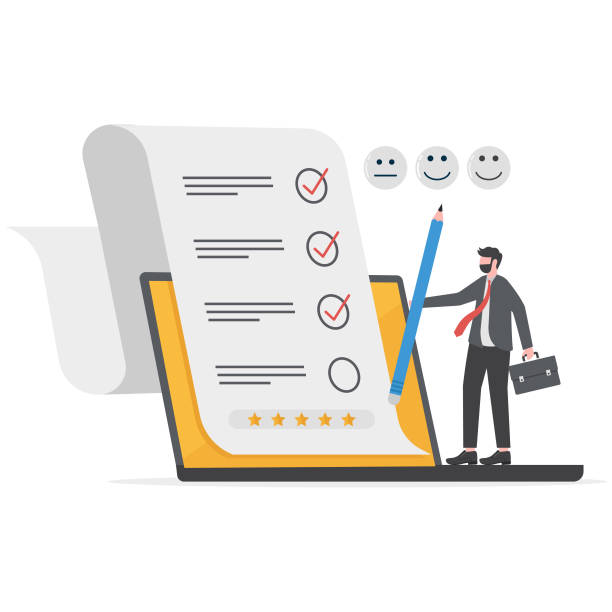
After choosing the platform, it’s time for the visual aspects of personal website design.
An attractive and user-friendly design plays a key role in retaining visitors and creating a positive experience.
The first principle is simplicity and clarity.
Avoid cluttering the page with unnecessary elements.
A clean and organized layout allows visitors to easily find the information they need.
Choosing a suitable color palette is also very important.
Colors can evoke different emotions and should align with your personal brand identity.
Using readable and appropriate fonts is also a fundamental principle; avoid complex fonts that reduce text readability.
Responsive Design, which correctly displays your website on all devices including mobile and tablet, is an undeniable necessity today.
More than half of internet traffic comes from mobile devices, so personal website design must be optimized for mobile.
High-quality images and videos also add to visual appeal but should be optimized to avoid slowing down the site’s loading speed.
Easy and logical navigation, with clear and accessible menus, helps users move around your site easily.
Following these educational principles helps you create a desirable user experience (UX) and captivate your audience with your website.
Did you know that customers’ first impression of your company is your website? With a powerful corporate site from Rasavab, multiply your business credibility!
✅ Custom and eye-catching design tailored to your brand
✅ Improved user experience and increased customer acquisition
⚡ Get a free consultation!
Producing Valuable and Purposeful Content for Personal Websites
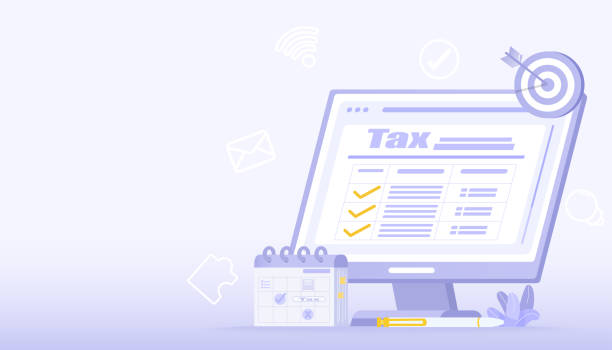
Content is king; this statement has come true in the world of the web.
For a successful personal website design, producing valuable, purposeful, and engaging content is essential.
Your content should meet the needs of your target audience, answer their questions, and engage them.
Content types can be very diverse: blog articles, portfolios, educational videos, podcasts, infographics, or even personal stories.
It’s important that the content is original, relevant, and high-quality.
For example, if you are a graphic designer, your portfolio should showcase your best works, along with project descriptions and challenges you faced.
If you are a writer, a blog with regular and high-quality articles can demonstrate your writing prowess.
Using keywords related to your field of activity in the content helps improve your site’s SEO ranking.
Also, your writing tone should match your personal brand.
Do you want to be formal, friendly, entertaining, or specialized? Answering these questions helps you create a consistent personality for your website.
Regular content updates not only bring users back but also signal to search engines that your site is active and dynamic.
A guide or FAQ section can also add value to your content and help users quickly find answers to their questions.
Remember that good content is always worth investing time and effort in.
Choosing the Ideal Domain Name and Hosting
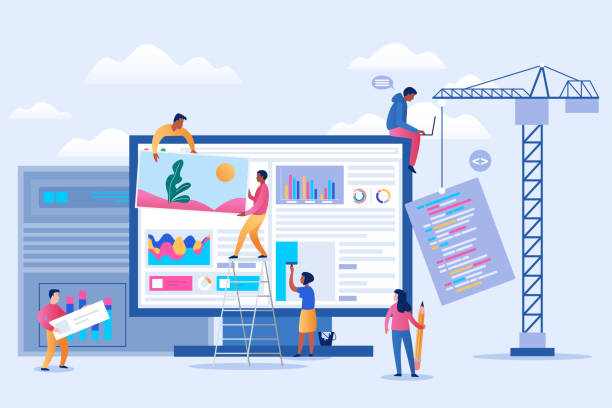
For your personal website design to go online and be accessible to the public, you need two fundamental things: a domain name and hosting service.
The domain name is your website’s internet address, like “yourname.com” or “yourportfolio.ir”.
Choosing a suitable domain name is crucial; it should be short, memorable, relevant to you or your field, and preferably include your own name.
Also, it’s best to choose a domain with a popular and reputable extension like .com, .net, or .ir.
Hosting service is the space where all your website’s files and data are stored, making it accessible on the internet.
Choosing a reputable and high-quality hosting is of paramount importance, as it directly affects site loading speed, security, and availability.
Important factors to consider when choosing hosting include server speed, bandwidth, storage space, technical support, and price.
There are various types of hosting, including Shared Hosting which is suitable for personal websites with low traffic, to Virtual Private Servers (VPS) and Dedicated Servers used for larger needs and high traffic.
Many reputable hosting companies exist in Iran and globally, and you can choose the best option for your personal website design needs by analyzing their services and prices.
Ensure that your chosen hosting supports the platform you’ve selected for your website (e.g., WordPress) and has sufficient security features.
A correct choice at this stage will bring a positive user experience for your visitors.
Search Engine Optimization (SEO) to Increase Personal Website Traffic
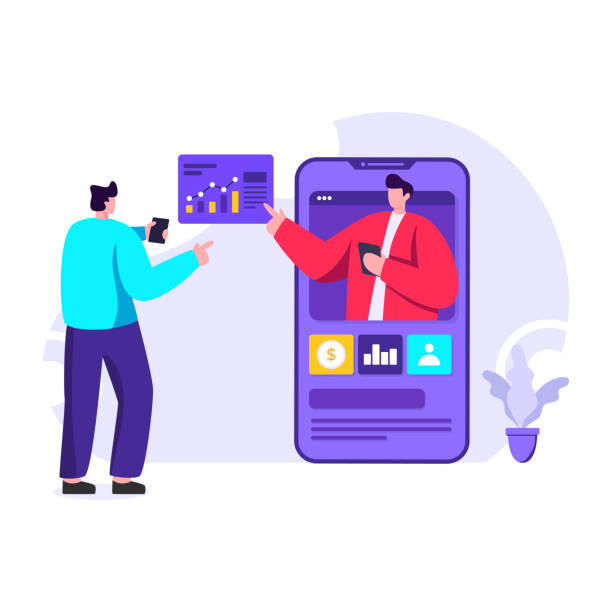
After personal website design and its publication, the next crucial step is audience attraction.
One of the most effective ways to increase traffic is Search Engine Optimization (SEO).
SEO refers to a set of actions that cause your website to appear higher in Google search results and other engines.
This includes two main parts: On-Page SEO and Off-Page SEO.
On-Page SEO refers to all optimizations performed within your website, such as using appropriate keywords in titles, meta descriptions, and page content, optimizing images (using Alt Text), site loading speed, and URL structure.
Make sure your website has an XML sitemap and is properly registered with Google Search Console.
Off-Page SEO refers to activities performed outside your website, including building backlinks (receiving links from other reputable websites to your site) and social media activity.
Analyzing keywords relevant to your field of activity is the first step in a successful SEO strategy.
Using tools like Google Keyword Planner or Ahrefs can help you in this regard.
The ultimate goal of SEO is to increase organic (free) traffic to your website, which has higher quality than paid traffic.
Continuous guidance and education in SEO keep you at the forefront of the competition.
Below is an initial checklist for personal website SEO:
| Row | SEO Item (On-Page) | Description |
|---|---|---|
| 1 | Keyword Research | Identifying words and phrases your target audience searches for. |
| 2 | Title Tag Optimization | Using the main keyword in the page title. |
| 3 | Meta Description | An attractive summary of page content with keywords. |
| 4 | Optimized URL Structure | Short, readable URLs including keywords. |
| 5 | Quality and Relevant Content | Producing in-depth, comprehensive, and valuable content for users. |
| 6 | Image Optimization | Compressing images, using appropriate Alt Text. |
| 7 | Site Loading Speed | Optimizing code, using strong hosting. |
| 8 | Mobile-Friendly | Responsive design for correct display on mobile. |
Website Maintenance and Updates for Long-Term Success
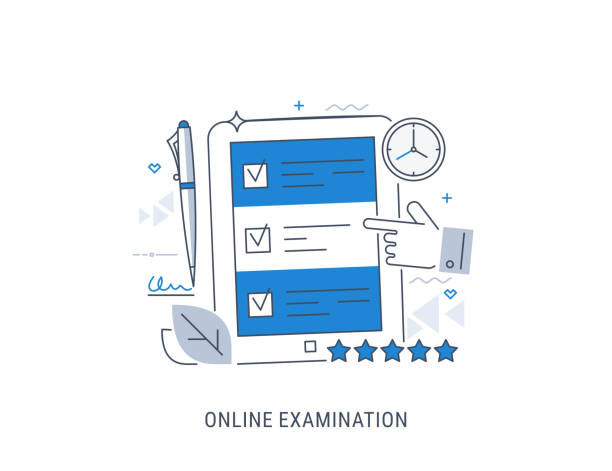
After completing personal website design and applying SEO optimizations, your work is not finished.
Regular website maintenance and updates are crucial to ensure its proper functioning, security, and relevance to the audience.
This part of the work has a specialized and educational nature and helps keep your site fresh and efficient.
One of the most important aspects is regular backup of all website files and databases.
This prevents data loss in case of issues like cyberattacks, server errors, or human mistakes.
Also, if you use Content Management Systems like WordPress, regular updates to the Core, Theme, and Plugins are essential.
These updates usually include security enhancements, bug fixes, and new feature additions.
Ignoring them can make your website vulnerable to security threats.
Monitoring website performance, including loading speed and uptime, is also important.
You can use tools like Google PageSpeed Insights to check speed and Uptime monitors to ensure your site’s availability.
Furthermore, review and update your website content periodically.
Identify and fix broken links and ensure your contact information is always accurate.
These actions not only improve user experience but also signal to search engines that your website is active and reliable, helping to maintain your SEO ranking.
Did you know that customers’ first impression of your company is your website? With a powerful corporate site from Rasavab, multiply your business credibility!
✅ Custom and eye-catching design tailored to your brand
✅ Improved user experience and increased customer acquisition
⚡ Get a free consultation!
Monetization and Development Strategies for Personal Websites
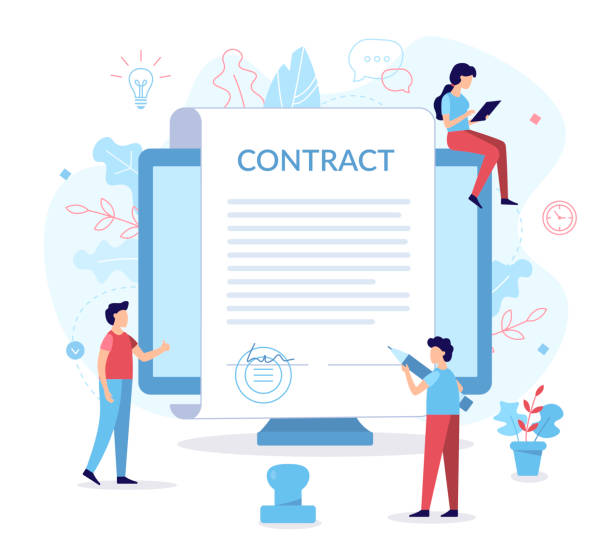
One of the entertaining and thought-provoking aspects in the journey of personal website design is its potential for monetization and development towards new horizons.
Your personal website can evolve beyond a showcase into a source of income.
Various strategies exist for this purpose, depending on your content type and goals.
One of the most common methods is Affiliate Marketing; you promote others’ products or services on your website and receive a commission for each sale or click.
Selling your own products or services, such as e-books, online courses, consulting services, or artworks, is also a very effective way.
If your website has high traffic, you can also earn income through displaying advertisements (like Google AdSense).
Sponsorship from brands is also possible if you have specialized content and a targeted audience.
Website development can mean adding new functionalities, such as discussion forums, member-only content sections, or interactive tools.
Also, expanding your content into new formats like podcasts or YouTube channels and linking them to your website can help your growth and diversify your income.
This is good news for those looking to maximize their online platform.
Continuous review and analysis of website performance and user feedback help you identify and implement the best monetization and development strategies, transforming your personal website into a successful and sustainable project.
The Future of Personal Website Design and New Trends
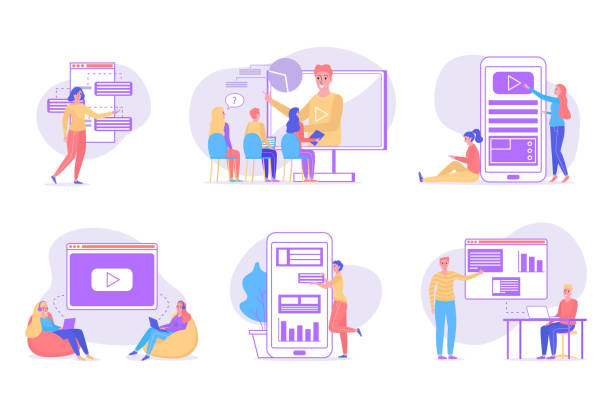
The world of personal website design is constantly changing and evolving, and awareness of new trends is essential to maintain your website’s dynamism and competitiveness.
One of the most important emerging trends is the increased use of Artificial Intelligence (AI) in all stages of website design and development.
AI-powered tools can play an effective role in content generation, SEO optimization, user data analysis, and even user experience personalization.
Voice Search Optimization is another trend that has gained increasing importance.
With the proliferation of voice assistants like Siri and Google Assistant, optimizing website content to answer voice queries has become a significant part of the SEO strategy.
Mobile-First Design is no longer an option, but a standard.
Given that the majority of users access the internet via mobile devices, your website should be designed from the outset for excellent display and performance on mobile.
Augmented Reality (AR) and Virtual Reality (VR) are also entering the web domain and can provide new entertaining and interactive experiences for personal websites, especially for artists and designers.
Furthermore, the importance of cybersecurity and data privacy is increasingly growing, and websites must adhere to strong security protocols like HTTPS and data protection measures.
This analysis of future trends shows that personal website design is moving increasingly towards personalization, intelligence, and interaction.
By following these trends, your personal website will not only be successful in the present but also prepared for the future.
Frequently Asked Questions
| Question | Answer |
|---|---|
| What is a personal website? | A personal website is an online platform that an individual creates to showcase their information, resume, portfolio, interests, or ideas. This website serves as a digital business card and a place for personal branding. |
| Why do I need a personal website? | Having a personal website helps you establish a professional online presence, showcase your skills and experiences, connect with your audience, find new job opportunities, and boost your personal credibility. |
| What content should I include on my personal website? | Typical content includes: About Me page (biography, education, experience), resume, portfolio (projects, articles, designs), blog (posts, insights), and contact information. |
| What are the basic steps to create a personal website? | Steps include: 1. Defining goal and audience 2. Choosing a domain name 3. Selecting hosting 4. Choosing a platform (e.g., WordPress or coding) 5. Design and structuring 6. Content creation 7. SEO and optimization 8. Launch and maintenance. |
| Should I use a Website Builder or code it myself? | If you don’t have coding knowledge or are looking for a quick solution, website builders (like Wix, Squarespace) or CMSs (like WordPress) are good options. If you want full control and high flexibility and have technical knowledge, coding is the best way. |
| How important is design (appearance) for a personal website? | Website design is very important. A beautiful, user-friendly, and professional design ensures visitors have a good experience, stay longer on the site, and take your personal brand seriously. Poor design can have a negative impact. |
| What is Responsive Design and why is it important? | Responsive design means designing a website whose appearance and functionality automatically adapt to the screen size of the user’s device (desktop, tablet, mobile). This feature is crucial to ensure a good user experience across all devices. |
| How can I choose a good domain name for my personal website? | The domain name should be relevant to your identity (usually your first and last name), short and memorable, easy to pronounce, and avoid too many numbers or hyphens. Common extensions like .com or .ir are generally preferred. |
| What is Web Hosting? | Web hosting is space on an internet-connected server that stores your website’s files (such as code, images, videos) and makes it accessible to users 24/7. Without hosting, your website will not be accessible. |
| How can I promote my personal website? | You can use social media, search engine optimization (SEO), content marketing (blogging), sharing links in email signatures, and networking with others in your field to promote your website. |
And other advertising services of Rasa Web Advertising Agency
Smart Direct Marketing: A novel service for increasing digital branding through key page optimization.
Smart Google Ads: An effective tool for increasing website traffic through marketing automation.
Smart Content Strategy: A novel service for improving SEO ranking through the use of real data.
Smart Custom Software: A creative platform for improving customer acquisition with Google Ads management.
Smart Website Development: Designed for businesses seeking user engagement through custom programming.
And over hundreds of other services in the field of internet advertising, advertising consultation, and organizational solutions
Internet Advertising | Advertising Strategy | Advertorial
Resources
Important Tips for Personal Site Design
How to Build a Successful Personal Website?
Complete Guide to Personal Website Design
Benefits of Having a Professional Personal Website
? Transform your business in the digital world with Rasaweb Afarin. We pave your online success by offering comprehensive digital marketing services including multilingual website design, SEO, and social media management. For a free consultation and to learn more about our solutions, contact us today.
📍 Tehran, Mirdamad Street, next to Central Bank, Kazeroon Jonoubi Alley, Ramin Alley, No. 6

